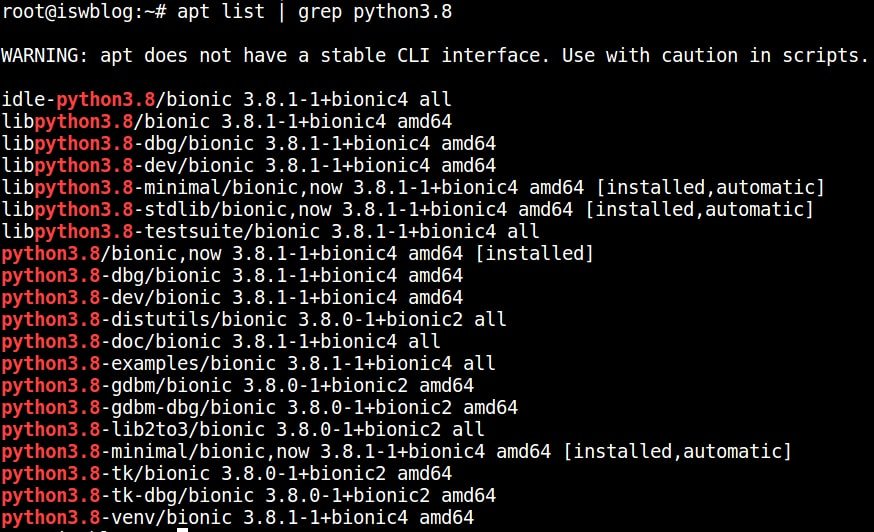

- #UBUNTU INSTALL PYTHON 3.6 APT GET HOW TO#
- #UBUNTU INSTALL PYTHON 3.6 APT GET UPDATE#
- #UBUNTU INSTALL PYTHON 3.6 APT GET WINDOWS 10#
To use this environment, you must activate it, which you can do by typing the following command that calls the activation script: source virtual_env_/bin/activate “virtual_env” is the name of the folder where this virtual environment is located. Once we have installed this package, we will create the virtual environment with the following command: python3 -m venv virtual_env We must first install an additional package: sudo apt-get install -y python3-venv To avoid this Python offers you the opportunity to install and run all the packages in a Virtual Environment.
#UBUNTU INSTALL PYTHON 3.6 APT GET UPDATE#
There are times when we do not want to update or alter the versions of Python packages that we already have installed on our operating system. Step # 3 (Optional) – Install Virtual Environment Python on Ubuntu Linux Ready! You can now run the “python 3” command from the CMD and you can interact with Python. Installing Python 3 from the Microsoft store has the advantage that it integrates automatically with the Windows CMD. In Windows we can install Python3 directly from the Microsoft store. Ready! You can now run the “python 3” command from the Ubuntu terminal and you can interact with Python. #or if you want to install Python version 3.7 # If you want to install Python version 3.6 In case you don’t have Python 3, you can install it from the Ubuntu repositories by running: #Update repository list To validate if you have Python 3 installed on your Ubuntu, you can run this command: python3 -V Recent versions of Ubuntu come with Python 3 installed, so you may not have to install it. Step # 1 – Install Python 3 on Ubuntu Linux
#UBUNTU INSTALL PYTHON 3.6 APT GET HOW TO#
Let’s see how to install Python without using a Utility. This gives you the opportunity to use Bash commands to do tasks on Windows.

This “Utility” allows you to use an Ubuntu Terminal as a command line tool.
#UBUNTU INSTALL PYTHON 3.6 APT GET WINDOWS 10#
I emphasize “natively”, since in Windows 10 there is an “Utility” from Ubuntu in the Microsoft store. In this tutorial I want to teach you how to quickly install Python 3 on Ubuntu Linux and Windows 10 natively. It is for this reason that regardless of the operating system you have, you need to know how to install Python to learn how to use it. ~/venv-3.6/bin/pip install -r requirements.Python has become the favorite programming language for Network Programmability and Automation.

Sudo apt-get -y install python3.6 python3.6-dev Sudo add-apt-repository -y ppa:deadsnakes/ppa Sudo apt-get -y install software-properties-common

The commands listed below show a installation and creation of a virtualenv. Newer versions of Ubuntu have already come with Python 3.


 0 kommentar(er)
0 kommentar(er)
